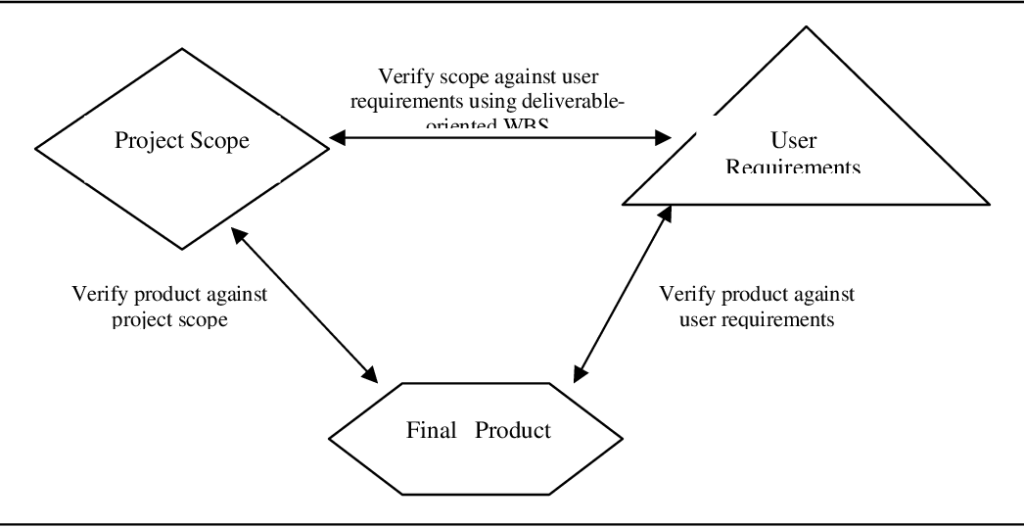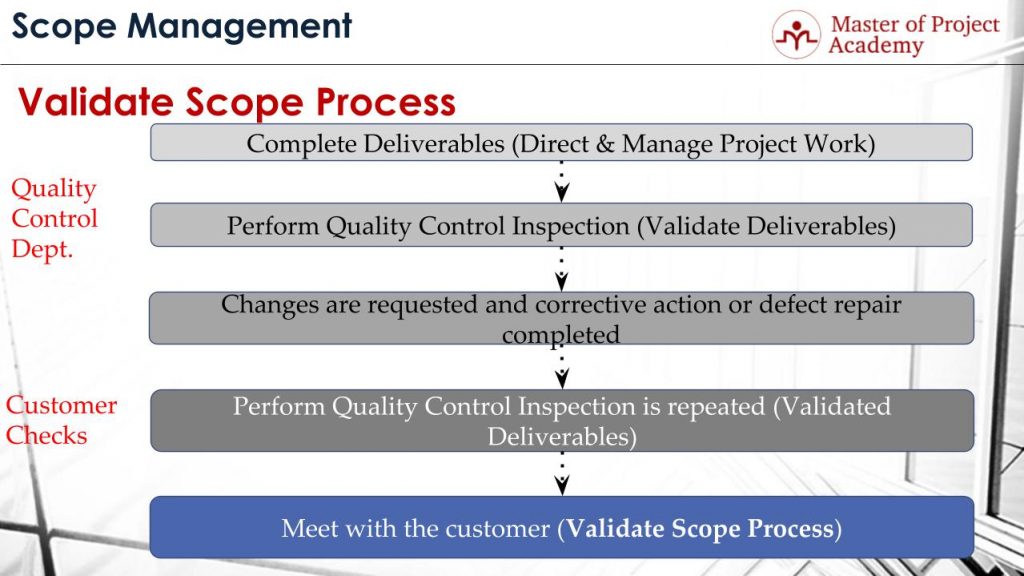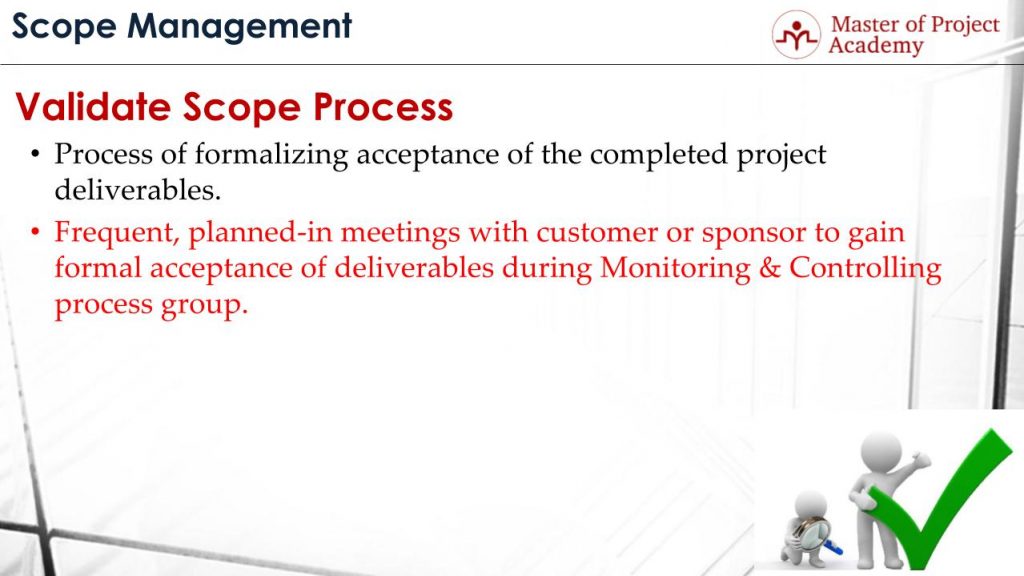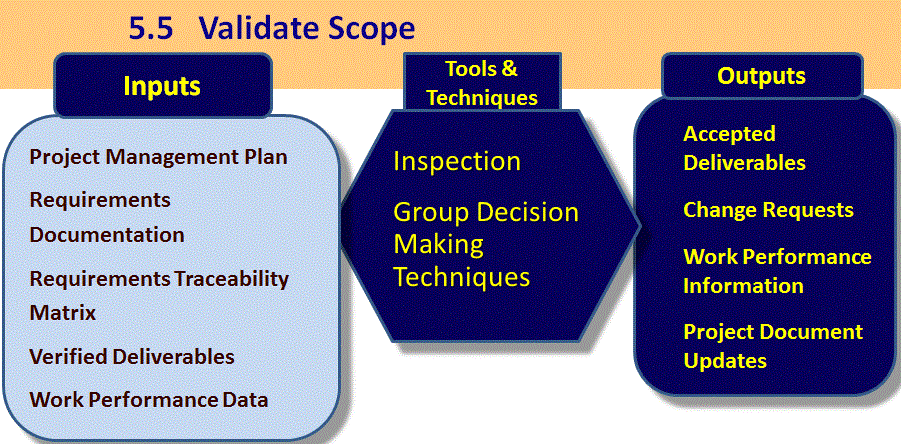
Project Scope Verification
Project Scope Verification
In the world of project management, ensuring that a project stays on track and aligns with its intended goals is crucial. That’s where project scope verification comes into play. In this informative article, we will explore the concept of project scope verification, its importance, and how it fits into the larger realm of project management. Whether you’re a seasoned project manager or just starting your journey in the field, understanding project scope verification is essential for successful project delivery. So, let’s dive in and uncover the ins and outs of this vital process!
Speak to MCTC today about our consultancy advice and training packages.

What is project scope verification?
Project scope verification is a crucial step in the project management process that involves reviewing and assessing the project scope to ensure that it aligns with the expectations of the stakeholders. It is a systematic and structured approach to confirm that all the deliverables, objectives, and requirements identified in the project scope statement are complete and accurate.
During project scope verification, the project manager and the project team work together to validate the scope and ensure that it meets the agreed-upon criteria and the needs of the project stakeholders. This process helps to minimise the risk of scope creep, ensure project success, and enhance communication and collaboration among all parties involved in the project.
Understanding the project scope verification process is essential for project managers and teams to effectively manage and control the scope of a project, ensuring that it remains on track and achieves its desired outcomes.
Understanding project scope verification
Definition of project scope verification
Project scope verification is the process of reviewing and confirming the scope of a project to ensure that it is complete, accurate, and aligned with the project objectives and stakeholder expectations. It involves systematically checking the deliverables, requirements, and objectives outlined in the project scope statement to validate their completeness and correctness.
Importance of project scope verification
Project scope verification is essential for the success of a project. It ensures that the project team and stakeholders have a clear understanding of what needs to be delivered, and it helps to manage expectations by confirming that the project scope is achievable within the defined constraints.
By verifying the project scope, project managers can identify and address any potential issues or discrepancies early on, minimising the risk of scope creep and ensuring that the project stays on track. It also enhances communication and collaboration among the project team and stakeholders, as everyone has a shared understanding of the project scope and objectives.
Goals of project scope verification
The primary goals of project scope verification are to:
- Confirm the completeness and accuracy of the project scope statement.
- Validate that the project scope aligns with the project objectives and stakeholder expectations.
- Ensure that the project team and stakeholders have a shared understanding of the project scope.
- Identify any gaps or discrepancies in the project scope and address them promptly.
- Minimise the risk of scope creep and ensure that the project remains within its defined boundaries.
- Enhance communication and collaboration among the project team and stakeholders.
By achieving these goals, project scope verification contributes to the overall success of the project and helps to deliver the desired outcomes.

Key elements of project scope verification
To effectively verify the project scope, several key elements need to be considered. These elements serve as guideposts throughout the verification process and help ensure that all aspects of the project scope are thoroughly reviewed and validated.
Document review
One of the key elements of project scope verification is the review of project documents. This includes the project scope statement, requirements documentation, work breakdown structure, and any other relevant project artefacts. By reviewing these documents, project managers can identify any discrepancies, missing information, or potential issues that need to be addressed.
Stakeholder engagement
Engaging stakeholders throughout the project scope verification process is crucial. By involving key stakeholders in the review and validation of the project scope, project managers can gather additional insights, clarify expectations, and ensure alignment with stakeholder needs. This collaborative approach enhances communication and buy-in from all parties involved, reducing the risk of misunderstandings and scope-related conflicts.
Change control process
A robust change control process is essential for effective project scope verification. As the project progresses, there may be changes or modifications to the project scope. By implementing a structured change control process, project managers can assess the impact of proposed scope changes, determine their feasibility, and make informed decisions about whether to approve or reject them. This process helps to maintain the integrity of the project scope and minimise the risk of scope creep.
Scope validation
Scope validation is a vital element of project scope verification. It involves confirming that the project deliverables meet the specified requirements and are aligned with the project objectives. This can be done through various validation activities, such as testing the deliverables against the acceptance criteria, conducting user acceptance testing, and obtaining feedback from stakeholders. Scope validation ensures that the project scope has been successfully implemented and is ready for delivery.
By considering these key elements and incorporating them into the project scope verification process, project managers can effectively review, validate, and control the project scope, ensuring its alignment with the project objectives and stakeholder expectations.
Project scope verification process
The project scope verification process consists of several distinct phases, each with its specific activities and objectives. Understanding these phases is essential for successfully implementing project scope verification in a project.
Initiation
The initiation phase marks the beginning of the project scope verification process. During this phase, the project manager and the project team review the project scope statement and other relevant project documentation to gain a clear understanding of the project objectives, deliverables, and requirements. They identify the key stakeholders and engage them in the verification process from the onset.
Planning
The planning phase involves developing a comprehensive plan for the project scope verification process. This includes defining the scope verification objectives, determining the scope verification approach, identifying the activities and resources required, and establishing a timeline for completion. The project manager also documents the roles and responsibilities of the team members involved in the verification process and communicates the plan to all stakeholders.
Execution
During the execution phase, the project manager and the project team systematically review and assess the project scope to ensure its completeness and accuracy. They perform document reviews, engage stakeholders in discussions and feedback sessions, validate the project deliverables against the defined requirements, and address any discrepancies or issues identified. This phase requires close collaboration and communication among the project team, stakeholders, and relevant subject matter experts.
Monitoring and Control
The monitoring and control phase involves continuously monitoring the project scope verification process and making adjustments as needed. The project manager tracks the progress of the verification activities, identifies potential risks or obstacles, and takes corrective actions to keep the verification process on track. Regular reviews and status updates are conducted to ensure that any changes or updates to the project scope are properly managed and documented.
Closure
The closure phase marks the completion of the project scope verification process. The project manager prepares a final report documenting the findings and outcomes of the verification process. This report includes any changes or updates made to the project scope, as well as any recommendations for future projects. The report is shared with the project team and stakeholders for review and approval, and it serves as a reference for future project scope verification efforts.
By following this structured project scope verification process, project managers can effectively review, validate, and control the project scope, ensuring its alignment with the project objectives and stakeholder expectations.

Challenges in project scope verification
While project scope verification is a critical process, it is not without its challenges. Project managers need to be aware of these challenges and take proactive measures to address them effectively.
Ensuring stakeholder buy-in
One of the key challenges in project scope verification is ensuring stakeholder buy-in. Stakeholders often have different expectations and priorities, which can lead to conflicts and disagreements during the verification process. To overcome this challenge, project managers need to engage stakeholders early on, involve them in the process, and communicate effectively to manage expectations and foster collaboration.
Managing scope changes
Project scope changes can occur throughout the project life cycle, posing a challenge to the verification process. Scope changes can impact project timelines, resources, and deliverables, and can lead to scope creep if not properly managed. Project managers need to implement a robust change control process to assess the impact of proposed scope changes, ensure alignment with project objectives, and make informed decisions about whether to approve or reject them.
Balancing time and resources
Another challenge in project scope verification is balancing time and resources. The verification process requires dedicated time and resources, which can be limited in a project environment. Project managers need to prioritise the verification activities, allocate resources effectively, and ensure that the verification process does not significantly impact the overall project schedule. This requires careful planning, coordination, and resource management.
Dealing with conflicting priorities
Conflicting priorities among stakeholders can pose a challenge to the project scope verification process. Stakeholders may have different interests, objectives, and expectations, which can lead to disagreements and delays in the verification process. To overcome this challenge, project managers need to facilitate open and transparent communication, actively listen to stakeholder concerns, and work collaboratively to find common ground and ensure alignment with the project objectives.
By acknowledging these challenges and implementing appropriate strategies and processes, project managers can effectively manage and navigate the project scope verification process, ensuring its successful execution.
Best practices for successful project scope verification
To ensure the success of the project scope verification process, project managers can adopt several best practices. These practices serve as guidelines and benchmarks for implementing effective project scope verification.
Establish clear project objectives
Clear project objectives are essential for effective project scope verification. Project managers need to define and communicate the project objectives clearly, ensuring alignment with stakeholder expectations. Clear objectives provide a reference point for the verification process and help guide the review and validation activities.
Define a comprehensive scope statement
A comprehensive scope statement is critical for project scope verification. The scope statement should clearly define the project deliverables, objectives, requirements, and constraints. It should provide sufficient detail to guide the verification activities and serve as a reference throughout the project life cycle.
Engage stakeholders from the beginning
Early stakeholder engagement is crucial for successful project scope verification. By involving stakeholders from the beginning, project managers can clarify expectations, gather insights, and address any potential issues or concerns. This collaborative approach enhances communication, buy-in, and stakeholder satisfaction.
Implement effective change control processes
A robust change control process is vital for project scope verification. Project managers need to establish clear procedures for assessing and managing scope changes. This includes defining the change request process, documenting impacts, evaluating feasibility, and making informed decisions about whether to approve or reject proposed changes. Effective change control processes help maintain the integrity and stability of the project scope.
Regularly review and update project documentation
Regularly reviewing and updating project documentation is essential for project scope verification. Project managers should ensure that all project artefacts, including the project scope statement, requirements documentation, and work breakdown structure, are kept up to date. This helps to capture any changes or updates that occur during the project and ensures that the verification process is based on the latest information.
Conduct thorough scope validation
Thorough scope validation is a crucial best practice for project scope verification. Project managers need to validate the project deliverables against the defined requirements and acceptance criteria. This can involve user acceptance testing, comparing deliverables with the project scope statement, and obtaining feedback from stakeholders. Thorough scope validation ensures that the project scope has been successfully implemented and is ready for delivery.
By adopting these best practices, project managers can enhance the effectiveness of the project scope verification process, minimise risks, and improve the overall success of the project.

Tools and techniques for project scope verification
There are several tools and techniques that project managers can use to facilitate and enhance the project scope verification process. These tools and techniques help streamline the verification activities, capture essential information, and ensure the accuracy and completeness of the project scope.
Scope verification checklist
A scope verification checklist is a valuable tool for project scope verification. It provides a structured framework for reviewing and validating the project scope. The checklist includes a list of items to be reviewed, such as deliverables, objectives, requirements, and constraints. By systematically going through the checklist, project managers can ensure that all aspects of the project scope are thoroughly reviewed and validated.
Requirement traceability matrix
A requirement traceability matrix is a useful tool for project scope verification, especially in complex projects with multiple requirements. The matrix links the project requirements to the project deliverables, enabling project managers to track the progress of the verification activities and ensure that all requirements are adequately addressed. The matrix serves as a reference tool, helping to identify any gaps or discrepancies in the project scope.
Document review templates
Document review templates can help streamline the document review process in project scope verification. These templates provide a standardised format for documenting the findings, recommendations, and outcomes of the verification process. They ensure consistency and accuracy in the review process and serve as a reference for future projects.
Stakeholder engagement plan
A stakeholder engagement plan outlines the strategies and activities for engaging stakeholders during the project scope verification process. The plan defines the stakeholders, their roles and responsibilities, and the communication channels and methods to be used. It ensures that stakeholders are involved at the appropriate stages of the verification process and that their inputs and feedback are properly captured and addressed.
By utilising these tools and techniques, project managers can facilitate and enhance the project scope verification process, ensuring its efficiency and effectiveness.
Common misconceptions about project scope verification
There are several misconceptions about project scope verification that need to be clarified to ensure a proper understanding of the concept.
Project scope verification is the same as scope validation
One common misconception is that project scope verification is the same as scope validation. While these two processes are related, they are not interchangeable. Project scope verification involves reviewing and confirming the completeness and accuracy of the project scope, while scope validation focuses on confirming that the project deliverables meet the defined requirements. Both processes are essential and coexist in the project management life cycle.
Project scope verification only happens at the end of a project
Another misconception is that project scope verification only occurs at the end of a project. In reality, project scope verification should be an ongoing and iterative process throughout the project life cycle. Regularly reviewing and validating the project scope helps to identify and address any issues or discrepancies early on, minimising the risk of scope creep and ensuring project success.
Project scope verification is a one-time activity
Some may mistakenly believe that project scope verification is a one-time activity. However, project scope verification involves multiple stages and activities that need to be performed systematically throughout the project life cycle. By continuously reviewing and validating the project scope, project managers can ensure that it remains accurate and aligned with the project objectives and stakeholder expectations.
By understanding and dispelling these misconceptions, project managers and teams can develop a more accurate and comprehensive understanding of project scope verification, enabling them to implement it effectively in their projects.

Benefits of project scope verification
Project scope verification offers several benefits for both project managers and stakeholders. These benefits contribute to the overall success of the project and help ensure that the project delivers the desired outcomes.
Ensures project deliverables align with stakeholder expectations
One of the primary benefits of project scope verification is that it ensures that the project deliverables align with stakeholder expectations. By systematically reviewing and validating the project scope, project managers can confirm that the deliverables meet the defined requirements and address the needs of the stakeholders. This increases stakeholder satisfaction and helps to build trust and credibility.
Reduces the risk of scope creep
Scope creep, the unauthorised expansion of project scope, can pose significant risks to a project. By implementing project scope verification, project managers can minimise the risk of scope creep by reviewing and validating the project scope regularly. This helps to identify and address any changes or modifications to the scope, ensuring that they are properly evaluated and approved. By controlling scope creep, project managers can maintain project focus, manage resources effectively, and deliver the project within the defined constraints.
Increases project success rate
Project scope verification plays a crucial role in increasing the success rate of a project. By reviewing and validating the project scope, project managers can identify and address any potential issues, gaps, or discrepancies early on, ensuring that the project remains on track and aligns with the project objectives. This increases the chances of delivering the project within the defined timeline, budget, and quality standards, contributing to overall project success.
Enhances communication and collaboration among project stakeholders
Project scope verification promotes effective communication and collaboration among project stakeholders. By involving stakeholders in the review and validation process, project managers can ensure that all parties have a shared understanding of the project scope and objectives. This fosters open and transparent communication, increases stakeholder engagement and buy-in, and reduces the risk of conflicts and misunderstandings. Enhanced communication and collaboration contribute to better project outcomes and stakeholder satisfaction.
In conclusion, project scope verification is a critical process in the project management life cycle. It involves reviewing and validating the project scope to confirm its completeness, accuracy, and alignment with project objectives and stakeholder expectations. By understanding the key elements, process, challenges, best practices, and benefits of project scope verification, project managers and teams can effectively manage and control the scope of a project, ensuring its success.
